#Edda Mussolini
Text
9 aprile … ricordiamo …
9 aprile … ricordiamo …
#semprevivineiricordi #nomidaricordare #personaggiimportanti #perfettamentechic
2022: Ann Hutchinson, ballerina e coreografa statunitense esperta a livello internazionale della notazione Laban. Visse e lavorò a Londra per gran parte della sua vita. Sposò lo storico della danza Ivor Guest e da allora (anni ’80) firmò le sue opere come Ann Hutchinson Guest. (n.1918)
2021: June Newton, nata June Browne, è stata una modella, attrice e fotografa australiana. Come attrice era…

View On WordPress
#9 aprile#Alice Springs#Ann Hutchinson#Ann Hutchinson Guest#Camilla Orlandini#Dark Man X#Dewey Martin#DMX#Duca di Edimburgo#Earl Simmons#Edda Ciano#Edda Mussolini#Eva Brigitta Hartwig#Filippo di Edimburgo#Howard Greer#ichael Degen#Jack Little#John Leonard#June Browne#June Brunell#June Newton#Lia Orlandini#Little Jack Little#Max-Michael Degen#Michael Degen#Paola Borboni#Philip Mountbatten#Principe Filippo#Ricordiamo#Sidney Arthur Lumet
0 notes
Text
Lorenzo Majnoni as Italo Balbo in "Edda Fiction" (2005)




#ww2#historical#wwii#reichblr#ww2 italy#wwii italy#ww2 movies#ww2 series#italo balbo#balbo#edda fiction#mussolini's daughter
2 notes
·
View notes
Text
Hermann Goring
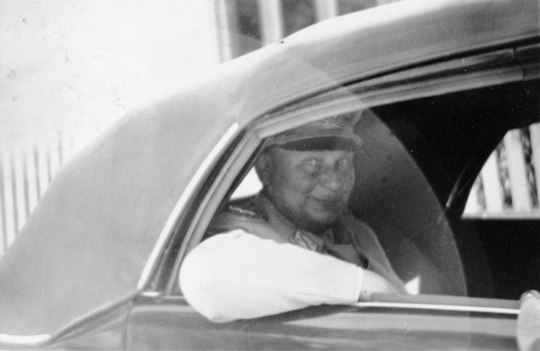
This is Hermann Goring, the Reich minister for Aviation, timeline:
1893: He was born in Rosenheim, 12 January.
1895: Albert, his younger brother, was born.
1904: He was sent to boarding school, where the food was poor and the discipline was harsh.
1909: He was sent to a military academy at Berlin Lichterfelde, from which he graduated with distinction.
1912: He joined the Prince Wilhelm Regiment (112th Infantry) of the Prussian army in 1912.
1913: His father died.
1913: He was admitted to officers' school.
1914: The First World War began.
1914: He served with his infantry regiment in the region of Mülhausen, a garrison town just a mile from the French border.
1915: He passed to the newly formed Luftstreitkräfte, the air force of the German Empire.
1915: He and his friend Loerzer were assigned as a team to FFA 25 in the Crown Prince's Fifth Army. They flew reconnaissance and bombing missions.
1915: He received the Iron Cross first class.
1918: When Manfred Von Richthofen, the legendary Red Baron, died Goring succeeded him as his successor.
1918: Highly decorated, he was also awarded the medal for valor Pour le Mérite, the highest German military decoration at the time.
1918: The First World War ended.
1920: He met his first wife, Carin von Kantzow.
1922: Göring went to Munich to study political science at university.
1922: He met Hitler and he joined the Nazi Party.
1923: He was given command of the Sturmabteilung (SA) as Oberster SA-Führer
1923: He married Carin.
1923: He take part in the failed Munich Putsch, and he was wounded in the groin.
1924: He and his wife visited Rome, passing through Florence and Siena. Göring met Mussolini.
1927: Thanks to a general amnesty, he and his wife were able to repatriate.
1928: He was elected deputy to the Reichstag.
1931: His wife died.
1931: He was sent on a mission to the Vatican, where he met Pope Pius XI.
1932: He was elected president of the Reichstag and from that position supported Hitler's bid for chancellor.
1933: He was one of the main actors in the Reichstag fire, used by the Nazis to eliminate any opposition.
1933: He was appointed Minister-President of the Free State of Prussia.
1933: He created the Gestapo.
1933: Adolf Hitler was appointed Reich Chancellor.
1933: He was appointed minister for aviation.
1933: He was appointed General der Infanterie by President von Hindenburg.
1933: He built his home called Carinhall in honor of his first wife.
1934: He granted control of the Gestapo to the SS.
1934: He was one of the main instigators of the Night of the Long Knives together with Himmler.
1934: He was appointed Reich Minister for Forestry.
1935: He married his second wife Emmy Sonnemann.
1935: He founded the Luftwaffe.
1936: He was appointed Reich Plenipotentiary for the Four-Year Plan.
1936: He also became responsible for the plan to confiscate the assets of German Jews, which was supposed to finance the rearmament of Germany.
1938: His only child, Edda, was born.
1938: With the help of Himmler's Gestapo, he plotted first against von Blomberg and then with his successor, von Fritsch, causing them both to fall
1938: He played an important role in the Anschluss, the union between the Third Reich and Austria.
1939: He created the Reich Central Office for Jewish Emigration in Berlin, with the task of promoting the departure of Jews from all German territories, and placed it under the direction of Heydrich.
1939: Hitler designates him as his successor.
1939: The Second World War began.
1940: Göring was given a renewed mandate to direct the "Four Year Plan" for the next four years, which made him responsible for the war economy.
1940: By a decree on 19 July , Hitler promoted Göring to the rank of Reichsmarschall des Grossdeutschen Reiches (Reich Marshal of the Greater German Reich), a special rank which made him senior to all other army and Luftwaffe field marshals.
1940: He gave directives for the plunder of the occupied territories, mainly France.
1941: It was Göring who gave, on Hitler's behalf, the order to prepare a "final solution to the Jewish problem" to Reinhard Heydrich.
1945: He was arrested by the Allies.
1946: He was tried at the Nuremberg trials.
1946: He committed suicide to avoid execution.
Sources:
Wikipedia: Hermann Goring
Military Wiki: Hermann Goring
❗❗I DON'T SUPPORT NAZISM, FASCISM OR ZIONISM IN ANY WAY, THIS IS AN EDUCATIONAL POST❗❗
41 notes
·
View notes
Text
Sangue di famiglia, la storia di Edda Ciano Mussolini
(ANSA) – FIRENZE, 29 APR – La storia di Edda Ciano Mussolini,
la primogenita del Duce, la figlia prediletta ‘luce dei suoi
occhi’, ripercorsa in un voluminoso saggio-biografia. È Sangue
di famiglia. Edda Ciano Mussolini. Amore, odio e perdono,
scritto da Maurizio Sessa (edito da Edizioni Medicea Firenze,
656 pagine, 28 euro), che si è basato su una vasta
documentazione e anche di lettere inedite…
View On WordPress
0 notes
Text
70s
Movimiento social
youtube
Yves Saint Laurent
En 1958 se presentó su primera colección, que fue un éxito. Pasó casi tres años al mando de Dior, época en la que facturaba el 50% de las exportaciones de moda del país. Saint Laurent demandó a la empresa por daños morales y con el dinero de la indemnización creó su propia casa de costura. El 29 de enero de 1962 presentó su primera colección «Yves Saint Laurent».
Se convirtió en uno de los diseñadores de moda más importantes del siglo XX, y fue el fundador de la marca de ropa de alta costura que lleva su nombre. Fue también el primero en abrir una tienda de prêt à porter con colección propia. Por esos años el ministerio de Hacienda francés admite que esta casa de moda recauda más que la Renault, pero al año siguiente su colección «Estilo años 40» obtiene muy malas críticas e Yves abandona la moda durante los dos años siguientes. Creador del traje pantalón, la sahariana, los shorts, en 1974 reaparece con una colección dedicada al Segundo Imperio, la revista Time le denomina «rey de la moda» y le dedica una portada.
En 1983, en el Metropolitan Museum de Nueva York, se inaugura una exposición dedicada a sus creaciones, dos años después en el Museo de Bellas Artes de Pekín y en 1986 el Museo de la Moda de París presenta una retrospectiva desde el año 1958. A finales de los años 80 la empresa Saint Laurent contaba con más de 10.000 personas trabajando en 200 países.

Emilio Pucci
Emilio Pucci nació en Florencia el 20 de noviembre de 1914, apenas unos meses después del inicio de la Primera Guerra Mundial, y presumía ser el primer miembro de la familia en trabajar en todos los años de su historia. La dinastía de la que procedía, los Pucci di Barsento, data casi del siglo XIV y estaba relacionada con Pedro el Grande o Catalina II. y fue mecenas de pintores de renombre como Sandro Boticelli. Su vida podría haber continuado sin preocupaciones, entre copas de Lambrusco y visitas a las casas de verano de los amigos de su padre, pero en 1938 se alistó en la Fuerza Aérea Italiana. En esos años, Pucci era un ferviente admirador de Benito Mussolini.
Así frecuentó el círculo íntimo del Duce y entabló amistad con su yerno Galeazzo Ciano, que fue ministro de Asuntos Exteriores de 1936 a 1943. Esta relación desencadenó uno de los episodios menos conocidos y más notables en la vida del diseñador. , una mezcla de aventura romántica y misión de guerra. La historia comienza cuando Mussolini ordena el arresto y posterior sentencia de muerte de Galeazz Ciano, quien se ha convertido en la mano derecha del dictador y guardián de importantes secretos de estado. Pucci, entonces teniente, horrorizado por la decisión del Duce, idea un plan para ayudar a escapar a Edda Ciano, la esposa de Galeazzo e hija de Mussolini. Poco antes del final de la guerra, Paul Ghali, corresponsal del Chicago Daily News, hizo un trato con Edda Ciano por 25.000 dólares a cambio de aquellos papeles que guardaba el teniente Emilio Pucci y que luego serían decisivos en el famoso juicio. de Núremberg. Los periódicos de la época recogieron la historia. La traición política por amor sería un éxito seguro. Barbara Parkins, vestida de Pucci, en una imagen promocional de 'Valley of the Dolls'. La experiencia de la guerra cambió la vida de Pucci para siempre.
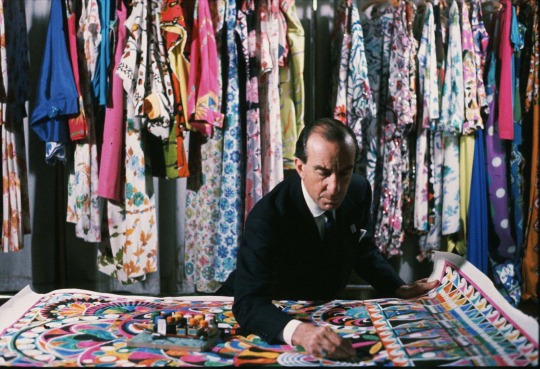
0 notes
Text
BENVENUTO SETTEMBRE
Buona Giornata con il Calendario Saggio.
Oggi è il 1 settembreSi ricorda S. Egidio ab.Il nome Egidio deriva dal termine latino aegis “protezione” o dal greco aigidion “capretto”. Ma un’altra ipotesi attribuisce al nome un’origine più nobile e il significato di “figlio dell’Egeo”.
Dice il proverbio…
“S. Egidio ti dirà che estro settembre avrà.”
Sono nati oggi
Edda Mussolini Ciano -1910,…

View On WordPress
0 notes
Text
[PDF/ePub] Sisters in Resistance: How a German Spy, a Banker's Wife, and Mussolini's Daughter Outwitted the Nazis - Tilar J. Mazzeo
Download Or Read PDF Sisters in Resistance: How a German Spy, a Banker's Wife, and Mussolini's Daughter Outwitted the Nazis - Tilar J. Mazzeo Free Full Pages Online With Audiobook.

[*] Download PDF Visit Here => https://forsharedpdf.site/59228204
[*] Read PDF Visit Here => https://forsharedpdf.site/59228204
In a tale as twisted as any spy thriller, discover how three women delivered critical evidence of Axis war crimes to Allied forces during World War II: ?Mazzeo is a fascinating storyteller? (New York Journal of Books).?In 1944, news of secret diaries kept by Italy's Foreign Minister, Galeazzo Ciano, had permeated public consciousness. What wasn't reported, however, was how three women?a Fascist's daughter, a German spy, and an American banker?s wife?risked their lives to ensure the diaries would reach the Allies, who would later use them as evidence against the Nazis at Nuremberg.In 1944, Benito Mussolini's daughter, Edda, gave Hitler and her father an ultimatum: release her husband, Galeazzo Ciano, from prison, or risk her leaking her husband's journals to the press. To avoid the peril of exposing Nazi lies, Hitler and Mussolini hunted for the diaries for months, determined to destroy them.Hilde Beetz, a German spy, was deployed to seduce Ciano to learn the diaries' location and
0 notes
Video
youtube
Jewish Cooking in America with Joan Nathan
“Vegetarian - Who Knew?”
*THE* Carciofi alla Giudia recipe is featured in this episode.
“This is the most famous of all Italian Jewish foods. It originated with the Roman Jews, and owes its fame to having been served at a restaurant in the Roman ghetto where it was discovered and quickly adopted by connoisseurs of excellent food all over Europe. Ultimately it found its way into many Italian cookbooks.
My mother, a Jewish woman who was born and raised in Rome, prepared especially delicious Carciofi all Guidia (better than you could find in any restaurant!). I watched her prepare them, and have prepared them myself, practically all my life.” - Edda Servi Machlin (who also noted that Mussolini was known to bring dignitaries to the Roman ghetto to eat them).
18 notes
·
View notes
Photo
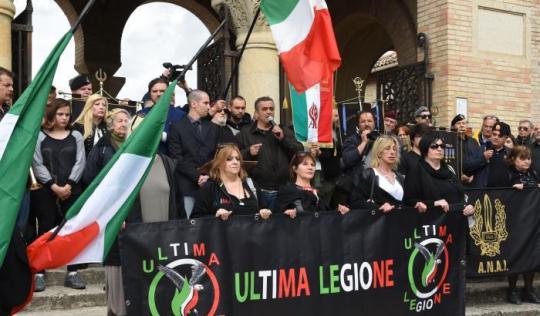
Domenica 31 ottobre i nostalgici del regime fascista si riuniranno, come ormai d'abitudine, a Predappio per ricordare la Marcia su Roma e anche quest'anno, come tutti gli anni, la manifestazione è stata concessa. In contrasto a questa ridicola pantomima di rottami del secolo scorso, l'Anpi ha organizzato (in giorni diversi, per evitare scontri) un'altra manifestazione antifascista domani, giovedì 28 ottobre, al Teatro Comunale: "Una ricorrenza per rifiutare tristi rievocazioni di razzismo, populismo e revisionismo" ha spiegato Vico Zanetti, presidente Anpi forlivese. Riguardo la manifestazione fascista, invece, il presidente degli Arditi d'Italia Mirco Santarelli, dichiara: "Abbiamo avuto l’autorizzazione a svolgere il corteo che partirà alle 10.30 da piazza Sant’Antonio fino al cimitero di San Cassiano. Davanti all’ingresso ci fermeremo per commemorare la marcia su Roma, poi, dopo le preghiere, un bersagliere suonerà il silenzio. Quindi ordinatamente ci avvieremo per visitare la cripta che per l’occasione sarà aperta tutto il giorno, presenti le pronipoti del duce Orsola e Vittoria Mussolini a cui si aggiungeranno anche Edda Negri Mussolini e Paola Mussolini". "Sarà una giornata caratterizzata da larga partecipazione – aggiunge Santarelli – con arrivi da tutt’Italia assai numerosi, che potrebbero portare a Predappio oltre un migliaio di persone. Insieme alla Questura, però – puntualizza – abbiamo organizzato un accurato servizio d’ordine perché non vogliamo che si ripeta quanto è successo a Roma il 10 ottobre scorso e vogliamo che tutto si svolga senza causare disordini". globalist ************* servizio d'ordine? i fascisti? assieme alla questura? 😦😮😠
11 notes
·
View notes
Text
9 aprile … ricordiamo …
9 aprile … ricordiamo …
#semprevivineiricordi #nomidaricordare #personaggiimportanti #perfettamentechic
2021: DMX, pseudonimo di Earl Simmons, rapper, attore e attivista statunitense. Conosciuto anche come Dark Man X, The Divine Master of the Unknown, è stato particolarmente famoso alla fine degli anni 1990. È riuscito a mantenere il rispetto nel mondo underground pur conseguendo un notevole successo commerciale, essendo inoltre un personaggio dalla forte personalità. Tra i film in cui ha recitato…

View On WordPress
#9 aprile#Camilla Orlandini#Dark Man X#Dewey Martin#DMX#Duca di Edimburgo#Earl Simmons#Edda Ciano#Edda Mussolini#Eva Brigitta Hartwig#Filippo di Edimburgo#Jack Little#John Leonard#Lia Orlandini#Little Jack Little#Paola Borboni#Philip Mountbatten#Principe Filippo#Ricordiamo#Sidney Arthur Lumet#Sidney Drew#Sidney Lumet#Sidney White Drew#The Divine Master of the Unknown#Vera Zorina
0 notes
Photo
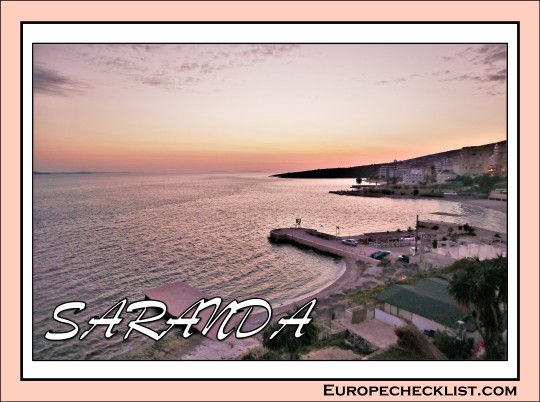
Europechecklist.com/saranda
The name of Saranda, comes from an early monastery that settled on a hill above the town, ‘Ayii Saranda’. The monastery was dedicated to 40 saints. However, the monastery is now in ruins due to the bombing of World War II. During the Italian rule (1939-1941), the town was named ‘Porto Edda’ after the daughter of the Italian Dictator Mussolini.
Video/photo software -> www.cyberlink.com
8 notes
·
View notes
Photo
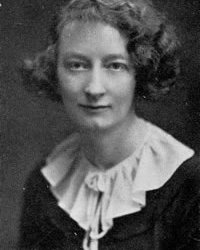
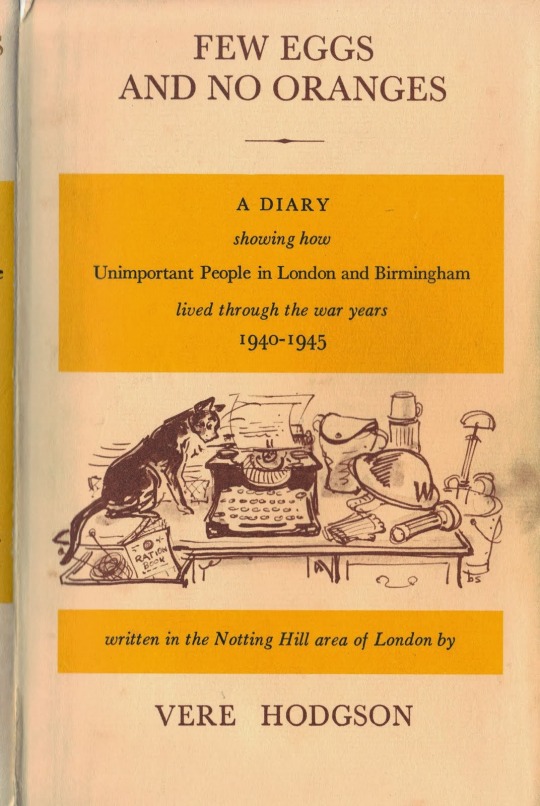

Hodgson, Vere. Few Eggs and No Oranges: A Diary Showing How Unimportant People in London and Birmingham Lived Through the War Years 1940-1945, Written in the Notting Hill Area of London. London: Dennis Dobson, 1976. Reprint (as Few Eggs and No Oranges: The Diaries of Vere Hodgson 1940-45), with a new preface by Jenny Hartley, London: Persephone Books, 1999.
Winifred Vere Hodgson (1901-1979) was born in Edgbaston, Birmingham, into what seem to have been shabby-genteel circumstances. On the one hand, after her father’s death in 1907 her mother was obliged to run the family home as a boarding house in order to make ends meet; on the other, she was educated at King Edward VI High School for Girls before reading history at the University of Birmingham. She was a niece of Thomas Vere Hodgson, the marine biologist on the H.M.S. Discovery during its voyage of 1904-6.
After graduating, she taught for several years at – wait for it – L’Istituto Statale della Ss. Annunziata, Florence, Italy, where – wait for it again – Edda Mussolini was among her pupils, and then for several more years at schools in (apparently – I’m a bit confused about this) Folkestone and Wimbledon. Deciding on a complete change, in 1935 she answered a “positions available” advertisement placed by a philanthropic body. Thus began her career as a social welfare worker, which seems to have been deemed important enough to have kept her from conscription during the war.
The organization for which Hodgson worked, the Greater World Christian Spiritualist Association, was located at 3 Lansdowne Road – still standing, this building was referred to at that time as The Sanctuary – and served primarily the Notting Hill and Holland Park areas, both of which seem to have been pretty down-at-heel at the time. They operated a night shelter for homeless women and gave grants of money and needed goods to the poor. (The Greater World, as its staff called it, doesn’t seem to me to fit the definition of a cult, so I’ll refrain from making any value judgements; you can read more about it here and here. It is still active.)
Hodgson’s job involved a good deal of secretarial and clerical work, but she also worked directly with the association’s beneficiaries as well as making nice with its benefactors. She often spent nights at The Sanctuary, either to be present for the women sheltering there or, once the war began, to take her turn as a fire-watcher. Although in her diary she always expresses gratitude for any free time she had, the job clearly brought her a great deal of satisfaction:
Went to see one of my poor old souls today. She has been getting a bit of chair-mending to do, and was better. She dreads the winter – as last year she was compelled to beg in the streets; but now we shall help her. The dread of complete destitution is terrible.
Like Clara Milburn, another wartime diarist whose output was published in the 1970s, Hodgson wasn’t writing primarily for her own benefit. Mrs. Milburn kept her diary with an eye to creating a record of the home front for her son, Alan, an officer in the British Expeditionary Force who was taken prisoner in Belgium in 1940. Miss Hodgson initially wrote for a cousin, Lucy Hodgson, who when the war began was in England on sabbatical from her job as an education officer in what was then known – to some people, at least – as Northern Rhodesia, and returned there in the Spring of 1940 “with grave misgivings,” according to Vere Hodgson’s introduction to the book.
Hodgson began sending installments of the diary to Lucy, who returned them to her and also sent parcels of cheese, tea, and other rationed foods. At some point Vere began mailing the pages to a round-robin of friends and relations, the last of whom would then send them on to Africa. (Amazingly, only one installment went missing.) Another thing that Hodgson’s diary has in common with Milburn’s is that she didn’t actually use printed diaries, allowing her to write very long entries at times.
The diary first came to public attention when Hodgson answered another advertisement, this one from the journalist Leonard Mosely, who was looking for first-hand accounts of life in wartime London as source material for his 1971 book Backs to the Wall (which is clearly something that I need to read). He quoted her entries for September 3rd, 1939, and May 7th, 1940. This resulted in a request from the publisher Dennis Dobson that Hodgson prepare an edition of her wartime diary as a whole. According to a publisher’s note in the Persephone reprint, “This she did, cutting by about three-quarters and editing substantially.” Since the reprint runs to 590 pages, one has to wonder what the original was like!
Few Eggs and No Oranges begins on June 25th, 1940, with the announcement that “Last night at about 1 a.m. we had the first raid of the war on London.” Air raids were at the very center of Hodgson’s war. She details, blow by blow, each and every raid and alert that she experienced. Indeed, she offers so much granular information on raids – where bombs fell, how many people were killed, etc. – and other topics that British newspapers weren’t permitted to discuss in any detail that it’s a wonder that the diary was never censored on its way out of the country. (At one point she reports that the censor returned to her a letter that she’d sent to a friend in Canada, so clearly this was something that really did happen! At the same time, she records many major events of the war all over the globe, seeming to assume that Lucy won’t have heard or read about them and leaving me wondering whether Northern Rhodesia can really have been that isolated by 1939.) Her preoccupation may have had something to do with the fact that she always found herself living on a building’s topmost floor: when the war began she was renting a room in a boarding house at 56 Ladbroke Road; in October, 1941 to her great delight, she moved to a “flatlet” across the street at 79 Ladbroke Road, the process of furnishing which she recounts with relish. Among other advantages, this allowed her to shelter friends who needed it: one of her friends was bombed out three times over the course of the war. To be sure, Hodgson did develop a good deal of sang-froid: “Very blitzy indeed last night,” she remarks off-handedly on January 10th, 1941.
When bombs weren’t falling, Hodgson simply recorded everyday life, often hilariously:
Spoke my mind to the cat. It is disgraceful that all the Cats have joined some sort of Pacifist Organization. To keep a cat in these awful days of food scarcity, and then have to catch the mice yourself, is a bit thick. I explained this to our animal.
As you might guess from the book’s title, food was another of Hodgson’s central preoccupations. There seem to be two conflicting narratives about food rationing in the U.K. during and after World War II. One is that pre-war Britons were overfed on a fatty, starchy diet, and that the nation’s overall health improved as a result of rationing. The other is that rationing was not only damaging to the nation’s morale, but led to widespread borderline malnutrition. Hodgson was inclined to the latter view. She repeatedly details all of the edibles she’s having to do without (fresh fruit was a major lack), either because they’re simply unavailable or, in the case of unrationed goods, because their prices have skyrocketed. On the other hand, she takes great joy in her own and other people’s ability to make whatever food could be had go further. (She writes about her Auntie Nell’s jam-making activities with obvious pride.) And whenever she had a windfall she was happy to share it.
And about those windfalls: Hodgson gleefully records each of the “gifts” of extra food she received from retailers – which included oranges that only children were supposed to get – and items bought from roadside vendors on trips out of London. It’s really quite shocking how common fiddling the system seems to have been, and how unrepentant people were about doing it:
Went for my bacon ration and while he was cutting it had a word with the man about the Cubic Inch of Cheese. He got rid of the other customers and then whispered, ‘Wait a mo’.’ I found half a pound of cheese being thrust into my bag with great secrecy and speed!
Then going to the Dairy for my butter ration I was given four eggs and a quarter of cheese!
Despite the housing and food problems she and her friends and neighbors had, Hodgson seems to have enjoyed a lively social life throughout the war, with neighbors, co-workers, former pupils, visiting relatives, and complete strangers she encountered over lunch at the Mercury Café. She saw plays at the Mercury Theatre and wrote about them as well as the films she saw. (She seems to have had no objection to American adaptations of British literature – How Green Was My Valley was a favorite – but did complain that American films were too fast-paced for her liking.)
Hodgson’s answer to the iconic question “Is Your Journey Really Necessary?” was nearly always an emphatic “Yes!” Throughout the war she made frequent trips to Birmingham to see her mother and sister (there, too, she recounted air raids and the damage they caused); to Brede, Sussex, where two more aunts lived; and occasionally to other places in search of fresh air, quiet, and a change of pace. Although she makes note of the bad travelling conditions that she often endured, she almost always persevered.
Her politics are difficult to pin down. She idolized Winston Churchill (“The bravest of us all!”), even though his policies led to the internment of a close friend, and on weekdays she read The Daily Telegraph. But on Sundays she read The Observer and The People, and once Germany invaded the Soviet Union she became a great fan of the Russians. Hodgson was also enthusiastic about Americans: she expresses equal admiration for Roosevelt and his 1940 opponent, Wendell Wilkie, and remarked that “Really the Americans seem to give the best Postscripts,” after hearing one from Dorothy Thompson in August 1941. (She seems never to have actually met any Americans, however.)
On religion, too, she is very vague. She greatly admired the altruism and sheer energy of Winifred Moyes, the founder of the Greater World Christian Spiritualist Association, and at least in the published version of her diary she never criticizes Moyes’s Spiritualist “meetings,” but neither does she ever seem to have attended one. She appears to have been only an occasional church-goer, more often listening to broadcast services. However, she did regularly read her horoscope, as well as Edward Lyndoe’s predictions in The People, and was irritated by a Mass-Observation report that disapproved of the finding that 40% of the British public had some degree of interest in astrology.
A couple of aspects of Few Eggs and No Oranges did make me uncomfortable. One is Hodgson’s enthusiasm for what could be called “air-raid tourism”: as soon as possible after learning where bombs had fallen during a recent raid she went to have a look at the damage, telling her readers about what she saw. This seems to have been a popular pastime, as she rarely seems to have been alone in her rubbernecking. People probably wanted to be reassured that others were worse off than they were, which is understandable but doesn’t make the behavior any less creepy.
And then there are the bits that brought me right up against the limits of my Anglophilia. On several occasions Hodgson mentions off-handedly, and for no apparent reason, that someone she encounters is Jewish: “Met Ivy [Croucher, an actress and elocution teacher; she’s the one who was made homeless three times] coming back from her lunch at the Grosvenor with her Jewish pupil.” Later, during a visit to Birmingham, she notes that she “got four [oranges] from a Jewish trader by spinning him a yarn.”
What exactly is the point? Did she enjoy inducing the produce vendor into actions that could easily have landed him in court? How did she even know that either of these people were Jewish? The distinctive dress of those now known in the U.K. as the strictly Orthodox would have been a rare sight at the time, especially away from London; and if Crompton’s pupil was eating at the Grosvenor Hotel, as is implied, then he or she can hardly have been Orthodox at all. And then there’s this:
Went to see The [Great] Dictator today. How I enjoyed it! Superb satire! For all its tomfoolery written with a profundity of serious purpose. The speeches of Hynkel, half-German, half-English, are there. People who understood German were even more convulsed than I was. ... The palace scenes, where Hynkel did not waste a moment, were all in the spirit of German thoroughness. But Mussolini in real life does not smile so much. All done by an East End Jew! [emphasis added]
One hardly knows what to say — other than “Wrong on both counts, sweetheart.”
When Persephone republishes a book, they don’t simply reprint it from the original, but set it into type anew. (Their reprint of Mollie Panter-Downes’s London War Notes 1939-1945 features a row of tiny U.S. flags at the top of each even-numbered page and a corresponding row of British flags on each odd-numbered one.) The original Few Eggs apparently included illustrations that aren’t in the reprint. All we get is a hand-drawn map of Notting Hill and Holland Park; while beautiful to look at, it’s reproduced here on such a small scale as to make it essentially useless. I’m slightly sorry that I didn’t try to find a used copy of the original publication.
Nevertheless, I enjoyed reading Few Eggs and No Oranges, and recommend it to anyone who’s looking for a (very long) first-hand account of the British home front.
#world war II#u.k. home front#first-hand accounts#diaries#a long post for sunday#the beta post editor is unable to handle a post of this length and complexity
4 notes
·
View notes
Text
Galeazzo Ciano nuovo Ministro degli Esteri del Regno d'Italia
Galeazzo Ciano nuovo Ministro degli Esteri del Regno d’Italia
Il 9 giugno del 1936 Galeazzo Ciano, conte di Cortellazzo, genero di Benito Mussolini avendo sposato nel 1930, la figlia Edda e considerato “delfino” del Duce raggiunge l’apice della sua carriera politica venendo nominato Ministro degli Esteri, subentrando, nella carica, allo stesso Mussolini. E’ considerato uno dei personaggi più influenti del cosiddetto ventennio fascista.
Galeazzo nasce a…
View On WordPress
#Alessandro Pavolini#Edda Mussolini#Galeazzo Ciano#Ministero Cultura Popolare#processo di Verona#Squadriglia "la Disperata"
0 notes
Photo
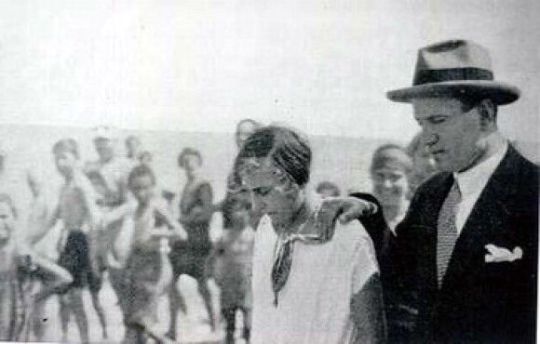
Benito Mussolini and his daughter Edda at Cattolica, Italy, 1925. [580 x 370] Check this blog!
5 notes
·
View notes
Photo
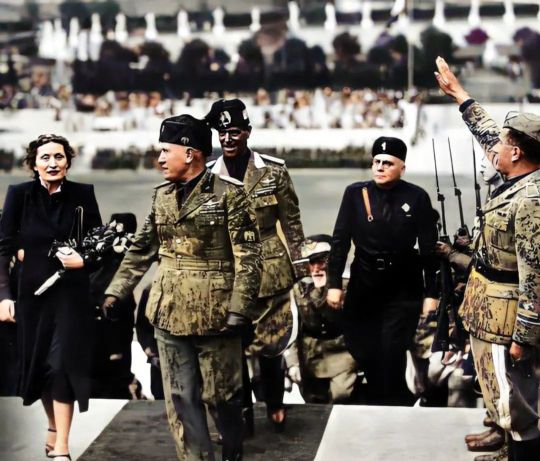
1930larda askeri geçit töreni sırasında Mussolini ve kızı Edda. Fotoğraf çekilmeden kısa bir süre önce Mussoliniyi bir bahçe fıskiyesi ıslatmıştı. #tarih #history #renklitarih #colorhistory #historylovers #historypictures #historyhd #foto #fotoğraf #fotografia #picture #ww2 #worldwar2 #ikincidünyasavaşı #dünyatarihi https://www.instagram.com/p/CZueJY-ufgz/?utm_medium=tumblr
#tarih#history#renklitarih#colorhistory#historylovers#historypictures#historyhd#foto#fotoğraf#fotografia#picture#ww2#worldwar2#ikincidünyasavaşı#dünyatarihi
0 notes
